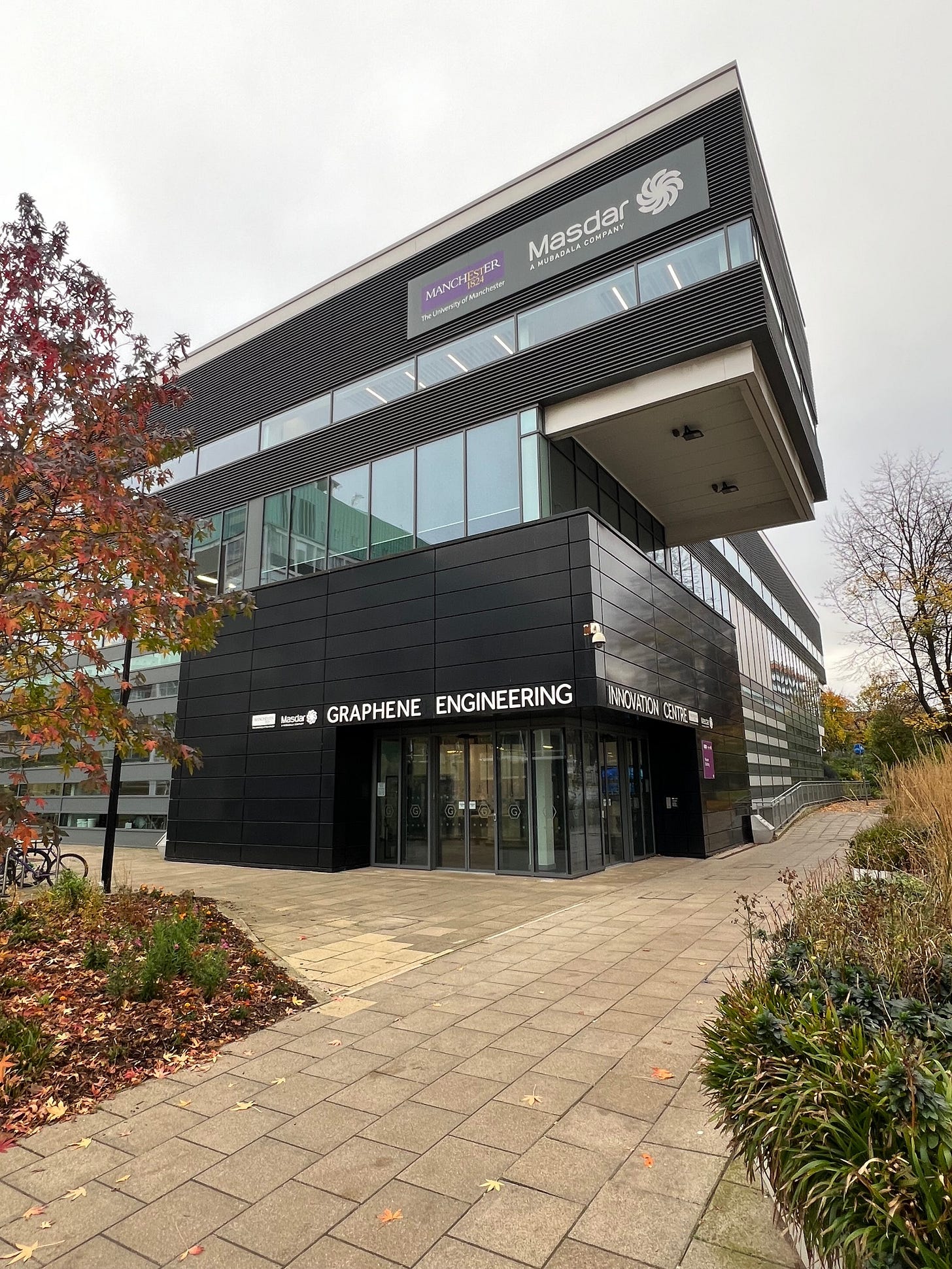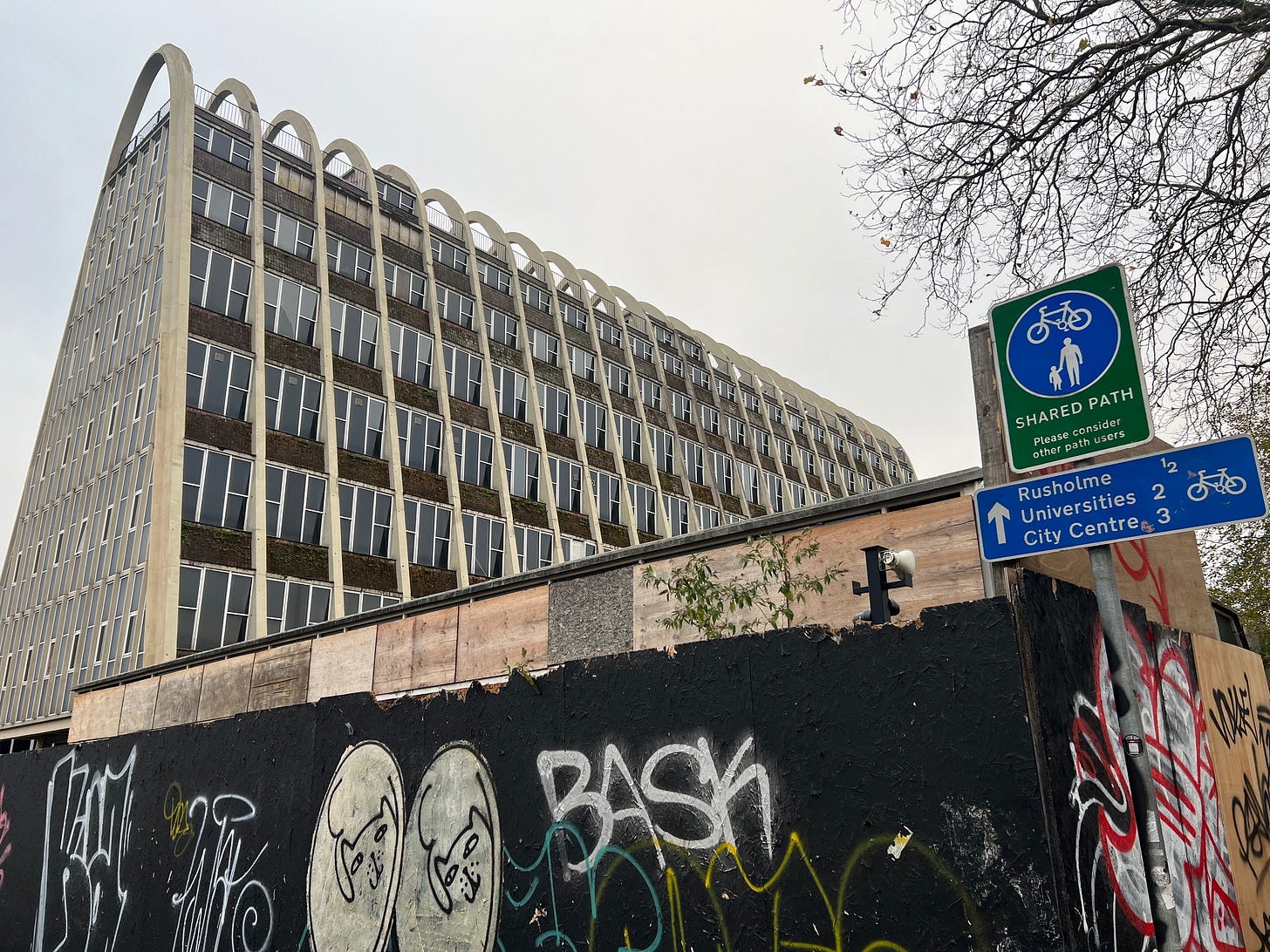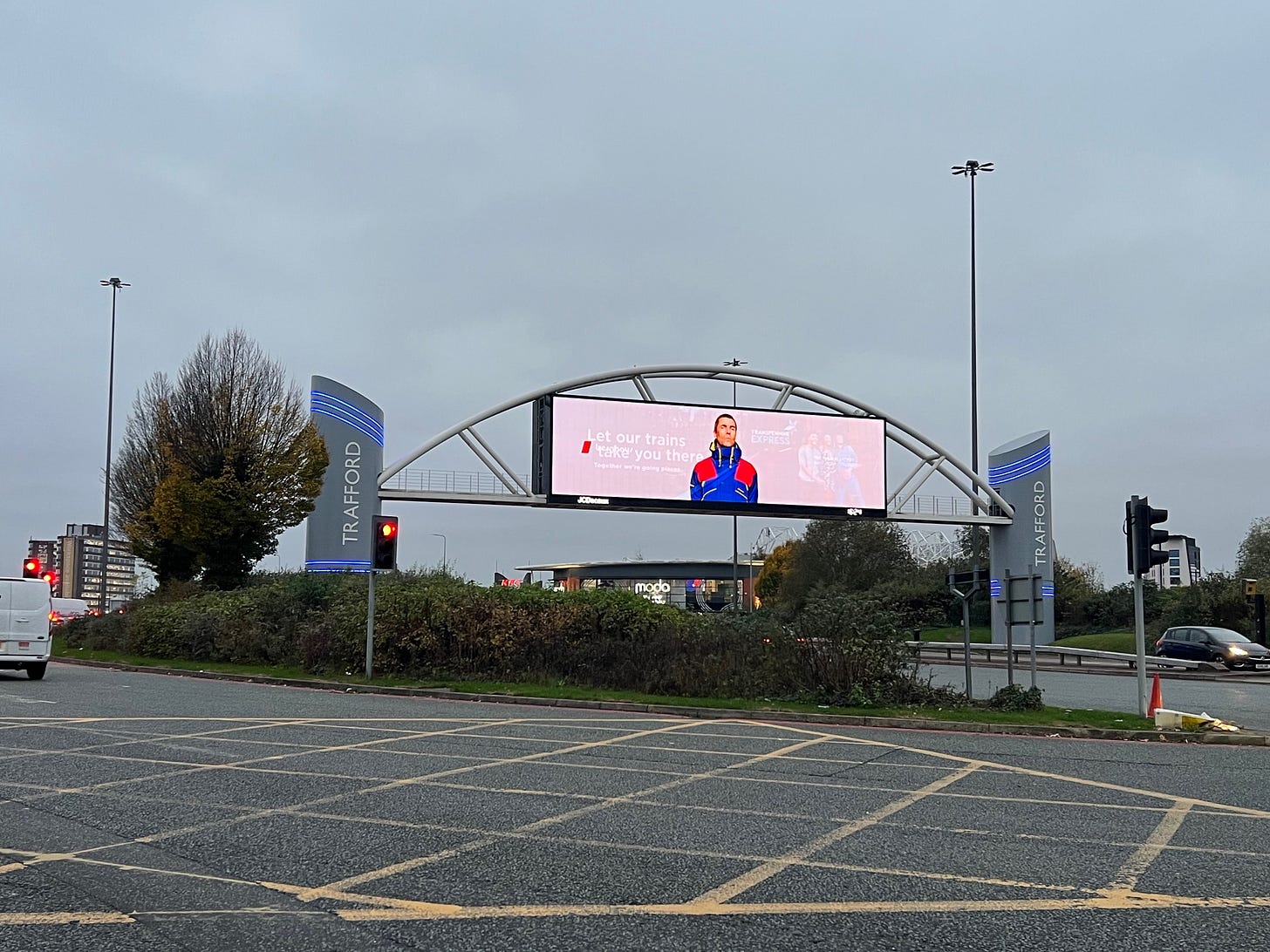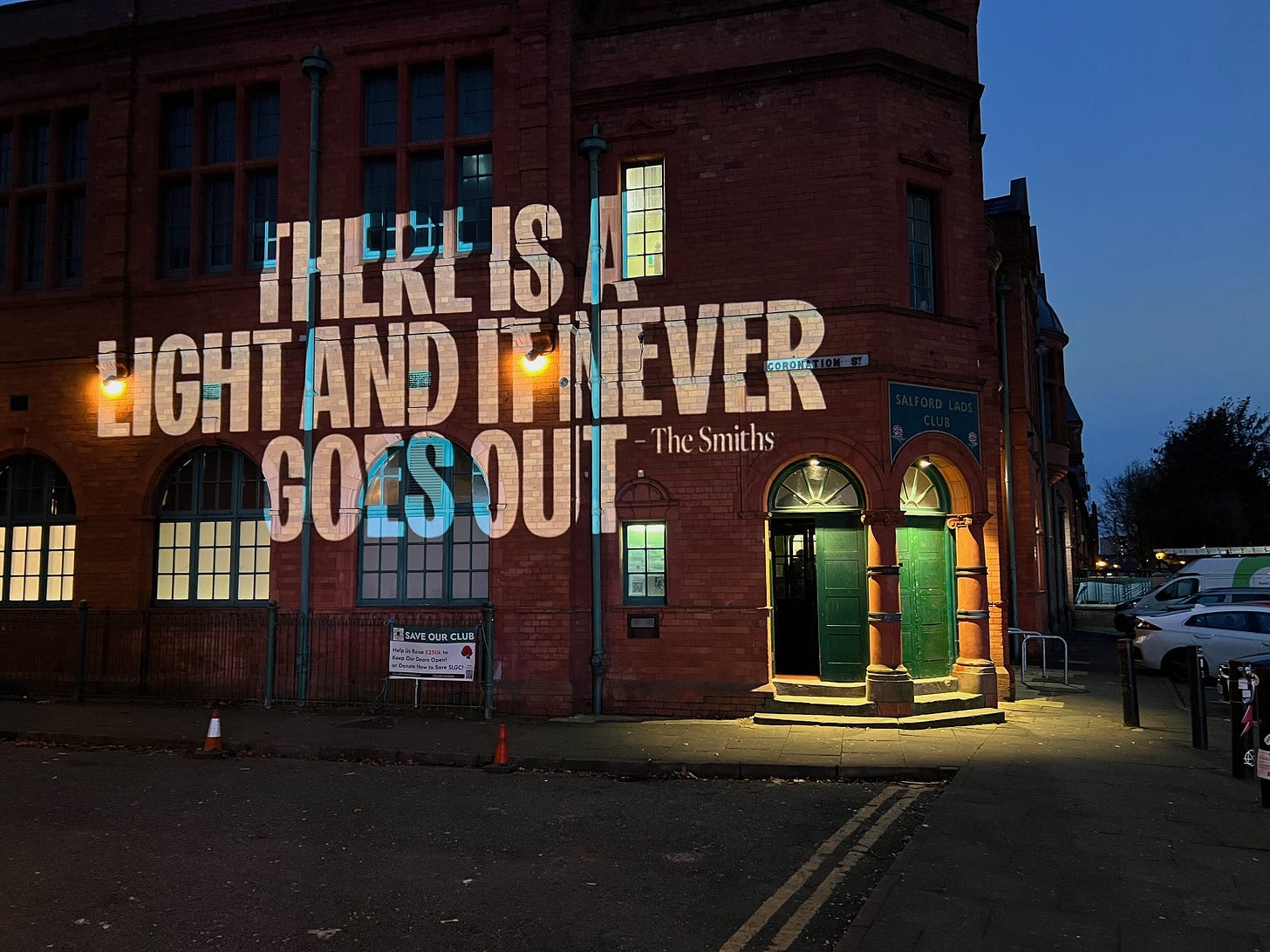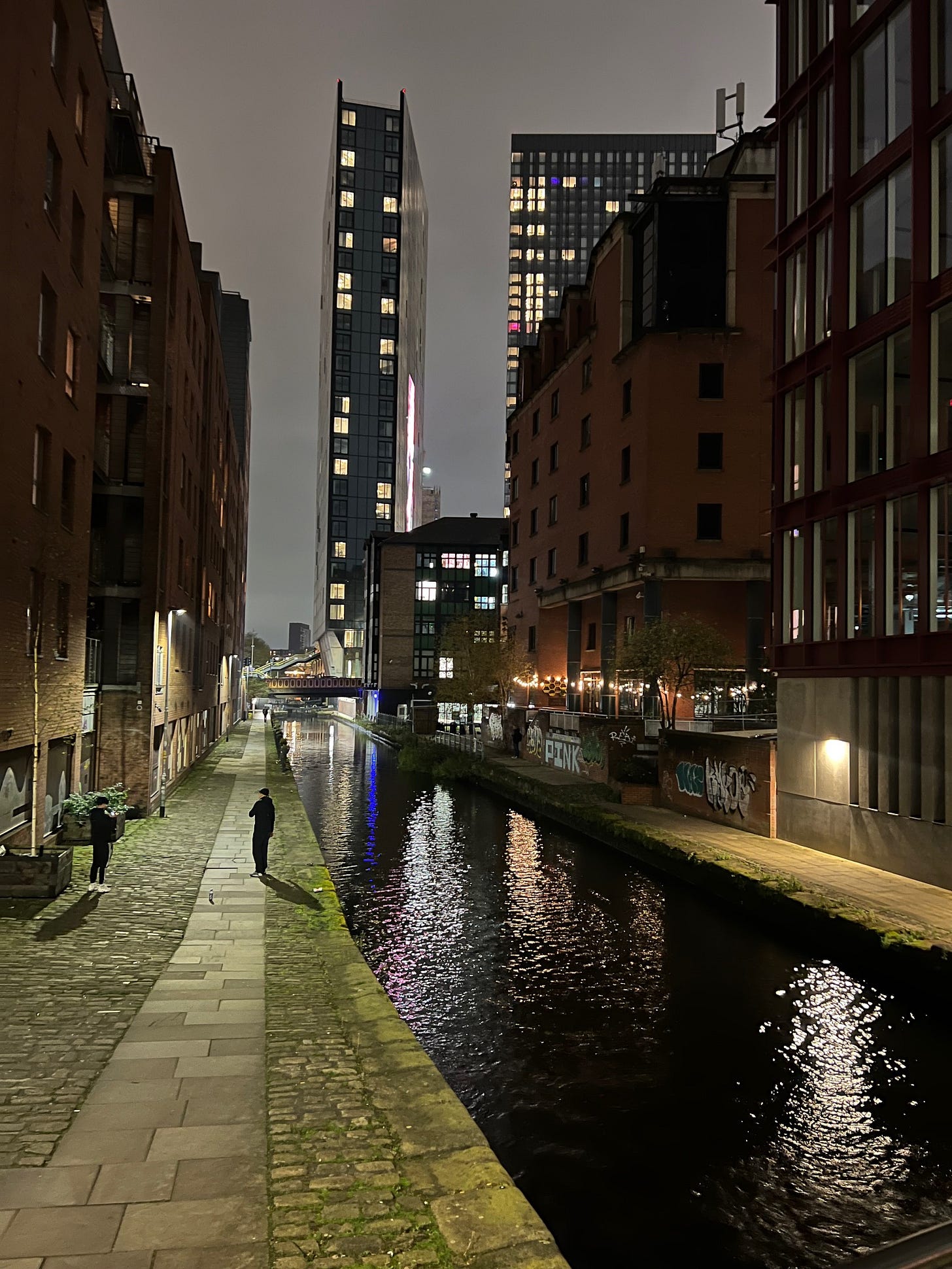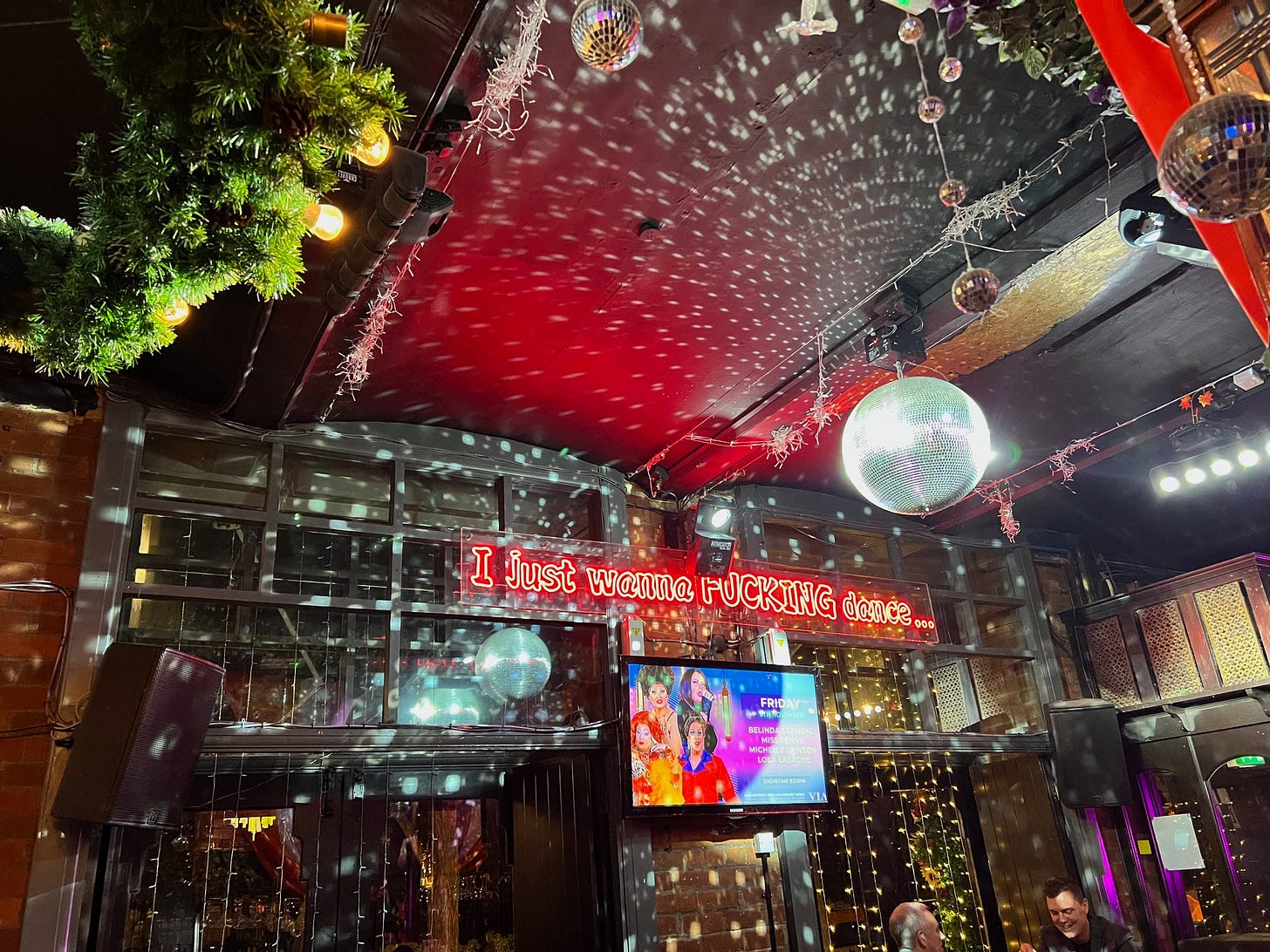I went to Manchester last Thursday to host a panel session on People, Process and Performance as part of the current Manchester Tech Festival. The last time I’d been to the city was in 2015 for a tech talk at the BBC offices in Salford Quays for a live demonstration of something I called Earthquake TV, a proof of concept that captured gyroscope data from your smartphone as a response to whatever was on television at the time. Shake your moneymaker and push its movements to the cloud. Earthquake TV even had pre-GPT era primitive gesture recognition. If you marked out a circle or a square in the air, good old-fashioned artificial intelligence (GOFAI) feature analysis disambiguated signal from noise in the Fourier domain and triggered appropriate responses. Those were the innocent days before the Great Weirding when there was still an almost universal belief in the greatness of technological progress for its own sake. One could go and show wondrous things to the tech curious and it was all good. The nature of digital interaction with anything and anyone became more fraught and contested following 2016. The arc of history no longer bends towards technology for many of us.
Reaching Manchester before 9.30am required a very early morning start. I had convinced myself I wouldn’t make it so I set three alarms to ensure I got up at 5am. As a result, I wasn’t able to sleep at all for fear of sleeping through them all. So I packed and readied myself largely on autopilot. It was quite dark outside as I boarded a mostly empty train to London, the few passengers onboard equally stiff. The Hammersmith and City tube over to Euston carried the first wave of early morning commuters at 6.30am. I found my seat on board the 7.13am fast train to Manchester travelling through Nuneaton, Stoke and Stockport to arrive in the damp morning mist at Piccadilly Station at 9.20am. I bought a metal poppy badge on the concourse then made my way outside into the cold. Right outside, the Victory over Blindness statue which summoned the initial ghosts of the day:
First Wilfred Owen, the famous WW1 poet who enlisted in the Manchester Regiment. Memories of riding a bike past his blue plaque up at Dunsden near Reading. With autumn leaves rolling into Remembrance I thought of Owen’s Dulce Et Decorum Est, the sheer panic of a gas attack:
Gas! GAS! Quick, boys!—An ecstasy of fumbling
Second Manchester’s own Mark E Smith whose irascible, restless spirit haunted much of the day with The Fall performing The Blindness on Later:
The Festival was in Victoria Baths on Hathersage Road to the South. The advice had been to catch a taxi rather than walk. I decided to ignore it so I could take in some of the town on foot and that proved to be the right decision. A short walk from the station at Sackville Gardens lay the Alan Turing Memorial. A man alone on a bench with an apple in hand contemplating the human condition. Eden, forbidden knowledge and death in equal measure.
when you stand in Sackville it's a different world from the one you knew where little boys meet little girls.
From there I turned left and a few minutes later encountered the sleek black exterior of the Graphene Engineering Centre. An impressive reminder of Manchester University’s remarkable scientific pedigree.
Rounding onto Upper Brook Street, an impressive and rather monumental phalanx of university buildings decked the road. The Henry Royce Institute, The Turing Building, The Schuster Building. Physics, Engineering and Chemistry, Biology all represented. The science parade stretched out right up to Anson Road swelling out with civic pride. These forms outlined the prophetic shape of an alternative future where our focus is on the material world that sustains us. On energy, not spirits in the de-material world of pure software, or AI. The two are now locked in mortal combat.
Eventually I took a left turn onto Hathersage Road and approached the outside of the Victorian Baths. A short negotiation at reception and I was in. It was more crowded than I imagined it would be. The erstwhile swimming pools were filled with rows of chairs and stages for speakers as they are most of the year. I was given a quick guided tour of the building noting the stolid 19th century woodwork and embossed fluid green tiling redolent of William Morris and his Arts and Crafts concerns. Standing on the upper floor I had a spectacular view out over one of the emptied pools sans water. This is where the session I was in would be taking place:
Shortly afterwards, I was on stage, the moderator on a 45 minute panel with a couple of industry colleagues on technical team dynamics. They spoke about how to find the right people, how to set them up for success with the right process and how to improve their performance through support on empowerment, mentorship and learning. I added my own views on these topics mentioning the key role played by organisation structure and why sometimes, a Reverse Conway manoeuvre was important for achieving it. Inevitably AI was referenced. How ir could help engineers be more productive. I tried to signal a note of caution on the environmental impacts of AI. Is anybody listening? We finished with some comments on performance metrics and how to use them for self-reflection within teams. I explained why standard frameworks like DORA are increasingly common benchmarks across tech companies enabling the quantisation of work. There was a fair bit of interaction in the question and answer section afterwards. Someone asked for tips on retaining staff in high performing teams. It was a topic we hadn’t covered focussing the conversation on hiring, not the longer game of inspiring those that joined to stay on the bus for longer. My response to this question referenced two closely related aspects. First of all psychological safety which revolves around establishing a strong blame-free culture. The sense that an individual team member will not be punished or criticised for speaking up with ideas or concerns or for making a mistake. Secondly the psychological contract which is harder to pin down. The unspoken and undocumented agreement that exists between an employer and employee that there is a mutual benefit, a quid pro quo in their current arrangement. I work for you, you pay my rent. Salary is just the most obvious aspect though. Other factors include mission and values alignment and the quality of management support. I took the opportunity to reflect on the start of my career at Psion thirty years ago where I was given the opportunity to learn about software development as a junior engineer. It was an entirely different era, far more pedestrian. Relatively few people I knew outside of work then were engaged in the obscure business of writing software for personal devices. Psion had a factory in Greenford, London in those days where their iconic organisers were built. New starters were given a guided tour of it in their first week to help them experience how the production line worked. Over the next decade, the company that could have been a contender for owning the future of mobile spun out its software division into a new vehicle called Symbian choosing to partner with Nokia and others. They sought to create the de facto operating system for the emerging mobile device era on their behalf. Meanwhile, Psion’s remaindered hardware function morphed into a middling Enterprise devices company which eventually ran out of steam to be swallowed whole by Motorola. Symbian itself fell apart a few years later as everything does. Today there is little concrete left of that era. Symbian evangelists proved to be full of sound and fury with concrete beliefs about the future ultimately signifying nothing. A quick show of hands revealed that many in Manchester had never heard of either company which was entirely to be expected. The material world of largely embedded software that Psion inhabited in the 1990s is quite niche today, mostly conducted in China. Tech staff in the UK, including the vast majority attending the Manchester Tech Festival work in a higher purely virtual domain on web and mobile development in the main far from the machine.
The preoccupations I had as a junior engineer on concerns such as getting software right the first time, effective memory management and coding for low power scenarios have melted into thin air. Now the craft of software development is secondary to the business of getting software released as early as possible and doing it as cheaply as possible too. Arbitrage has made it attractive for businesses to nearshore or offshore development. It’s harder to see how a reshoring strategy could fundamentally change the course of recent history given the relative talent base of international vs. UK developers. There is a tinge of mournfulness about where we are which is accentuated when considering the post-war era. The work that Turing and others did in the UK decoding Enigma helped build the foundations for Computing as a discipline. Their heroic amateurism was coopted by political reality. In Psion’s case reality arrived in the relentless form of neoliberalism. Free-market capitalist logic required a move away from holistic engineering to a bicameral model in which hardware and software were treated differently. Working mainly or exclusively on the latter was encouraged. Working on hardware became a harder sell. The rationale being that software with its zero marginal costs would generate more growth which meant more money for those that owned the business. Increasingly that meant billionaires who made their fortunes from illiberally applying market forces irrespective of social cost. I thought about how we are living through an era of great political change in the West. A new world with Trump unbound at its heart. The compact with ordinary citizens is changing and many are yet to understand what that means. We are all guinea pigs in the transition from liberal democracy to elective authoritarianism.
An audience of around a hundred were arrayed in a dozen rows down the swimming pool. Almost all stayed on as we went back and forth bouncing about with our responses. After we finished, a short break to catch up on emails and then the main event of the day loomed. A walk across Manchester. I wasn’t entirely clear which way to go initially. I wanted to see Rusholme and Salford and make a psychic connection back to The Smiths decades on from when they sang about them. When I established my mental connection with these places in my private map of the North. So I headed up Anson Road past the Indian restaurants of Curry Mile to Birchfields Park passing Manchester Grammar School’s expansive playing fields on the leaf-strewn Old Hall Lane. Michael Atherton would have played here back in the early 80s indie era prior to his stewardship of a hapless England team. At the end of the road, the listed Hollings Campus building, or Toast Rack, as I later learned it is termed locally. Currently awaiting development into luxury flats like so much else historic here and everywhere else:
I’d been listening to the Inspiral Carpets up to this point on my headphones. A significant proportion of the people I’d walked past also similarly sporting over the ear headphones rather than AirPods. Once I got to the quiet of Platt Fields Park, I switched channel. The Fall’s High Tension Line made its presence felt. The Smiths and others crowded in, all of them with a Mancunian connection. I yanked the tracks that made the most sense of the surroundings and accompanying defiant Autumn mood into an impromptu compilation entitled A Day in Manchester. It included many of the tracks from this city that I first experienced when I was in my early 20s in Cambridge and London, a uniquely powerful period for establishing one’s core memories. And, increasingly it seems, the engine for the nostalgia factory as one grows older. This reminiscence bump for me like many others of Generation X has a uniquely Manchester Encoding. My personal reminiscence bump has low level code mixed in with music from this city in a cocktail of work and play that those who were working in tech in the 90s will likely remember too:
The reminiscence bump is the increased proportion of autobiographical memories from youth and early adulthood observed in adults over 40. It is one of the most robust findings in autobiographical memory research.
Platt Fields was peaceful and green. It felt like there were more squirrels than people around. The tranquil Shakespeare Garden gave way to a small lake in the centre with a striking community cycling mural on one side of a closed cafe. Further on, another mural relating to Shakespeare and portraying Rosa Grindon. I didn’t stop to find out what it meant at the time, later ascertaining she was a noted Suffragette and Shakespeare scholar from these parts. Emerging on the other side of the park, I headed down Yew Tree Road. A little further along I found Maine Road showing no obvious sign of its footballing past. There was scant indication in fact that the mixture of terraced streets and smart new build flats here had any kind of special history. It turned out afterwards that residential housing had replaced the old stadium twenty years ago. Claremont Road was the first slightly edgy part of town I’d encountered bordering the notorious Moss Side. A woman on the street confronted me with what looked like tarka dhal demanding I buy it from her. I demurred. Over the main road and past Alexandra Park the streets got gradually more affluent. Tree-lined spacious houses unveiled their wares on Whalley Road. It was darkening by now at 4pm. I picked up the pace on Seymour Grove. As I approached Old Trafford itself, I found myself on an uninviting arterial road with a narrowing pavement designed to discourage pedestrians. There were few walkers for company but a disconcerting number of artful dodgers were zooming past fast on powered bikes. The sudden threat of phone theft, the whiff of London. Over by the vast White City Circle, the initial glimpse of the Old Trafford ground, Bobby Charlton’s Theatre of Dreams. An understated red neon “Manchester United” sign visible from a distance. In the middle of the roundabout, a huge advertising hoarding with Liam Gallagher rampant. How he must be revelling in being plastered large in enemy territory.
By this point I was closing in on hallowed ground. I wanted to ensure that on this journey, I paid due respect to the Salford Lads Club, the scene of that photo of The Smiths on the inside of The Queen is Dead. I crossed over the River Irwell not long afterwards with Salford Quays on the other side of the dual carriageway. Not too far away now. Dodging and weaving unpredictable cycle lanes I turned right on Phoebe Street rounding it in what was now darkness. Through a sketchy looking small park past a group of silhouetted youths hanging around a bench, I managed to find and walk along St Ignatius Walk, at 5pm I finally spotted it, the Salford Lads Club. I first thought about coming here in the mid-80s and now I’d finally done it. The iconic green door was the same one seen in countless photos. The moment felt otherworldly. Why, though? Encountering musical history is overwhelming for many complex and contradictory reasons. I stood outside on the street staring, eventually saying hello to two members of staff who were outside fiddling with a projector throwing a famous lyric onto the side of the building. I asked what it was for. It turns out the building is under threat of closure and the club needs £250k to stave off the inevitable redevelopment into yet more luxury housing one assumes. A moment of surprise and sorrow. In an age suffused with assertive billionaires, none seemed to have stepped forward to preserve this slice of history dating back to 1903. We, and more importantly they who have the means, are incapable of protecting anything that has no obvious return on investment. Like culture. Or society. Externalities. Or anything that is important to us but not to financiers. They know the cost of everything and the value of nothing. The same calculation is in play today elsewhere. The rape of the earth is driving us closer to the edge of the Petri Dish. Ubu Le Roi, the unquiet ghost of a deeper more noumenal time is abroad. He has Mark E. Smith beside him here with me as I walk the streets. The North Will Rise Again he exhorts. City Hobgoblins and Gremlins:
Spiders know these things
Gremlins know these things
Tap, tap, tap, tap
You think it's the pipes
But who turns on the lights?
Our city hobgoblins
Ubu Le Roi
is a home hobgoblin
I pulled out my phone and donated to the cause. It couldn’t give very much but even so, it felt like the single best thing I did all day.
By this point I’d done about 12 km in a loose fit in the form of a generous smiley across the south of inner Manchester stretching from Victoria Baths to now. It felt like I had walked a lot further than that. Interesting experiences can engender a sense of time dilation. I walked down Coronation Street beside the Club and a few yards to the left stumbled onto the pavement of yet another dual carriageway, Regent Road. Manchester feels overly full of these busy roads. An excess of cars. The result one feels of a cavalier and overly positivist approach to town planning. I’d been advised in the morning by one of the audience to “check the skyline”. Check the record, check the guy’s track record! He is Nuts. Looking into the east, towards Piccadilly Station, a dozen glittering high rise buildings rose erect framed in the starry sky. Walking towards them, I encountered the fresh aftermath of a triple car crash. Someone went into the side of a car that was turning right resulting in a double write off. Both protagonists were on the mobiles to friends and family talking to the disembodied instead of each other with a sizeable crowd silently gawping. I felt a sense of the end of days. Self absorbed isolation in darkness with only our phones for company with angry horns blaring. This is how it feels to be lonely. I blocked it out by listening to The Happy Mondays as I slipped past the traffic jam backed up all the way to Deansgate. Down Liverpool Road up through Castlefield along Whitworth Street following the waterside path. Behind me a vision of Manchester mixing the old and the shock of the new:
Upon reaching the corner of Sackville and Canal, I stopped for a drink in the Polari Lounge. This felt like the heart of the city’s gay district albeit a very quiet one at 6pm on a Thursday evening. Expansive but gloomy with slightly faded decor it had a haunted ballroom feel like a throwback to a different place, the Overlook Hotel in The Shining maybe. I like you, Lloyd. I always liked you. You were always the best of them. Fiery Jack. I perched on a high barstool in front of a small round table and took a picture of myself in the lifesize looking glass to the left. The man in the mirror confronts an alternate reality. Further along the wall, a Warhol-style garish Judy Garland painting. Ahead of me a determined statement of intent visible through sequins and glitter ball light:
I left to catch my train walking through the Village listening to Liam Frost’s mighty Mourners of St Pauls. As I did so I travelled through time back to the mid 70s when the likes of Trump were having it large in Studio 54 rather than prosecuting war in Vietnam or persecuting the powerless simply for being different. Now America has chosen the bleakest of visions, the plot line will move into horror music mode. The next act sees the hatch twisted tight with humanity locked in the hold. This day of walking in the Fall will itself ooze into the geometry of future nostalgia as we cross the border into the country of last things. The only job to be done now is to witness and document the radiating disasters that will progressively unravel society. I thought about this as I travelled back sketching out notes for this post. There was nothing else to say. Just over a couple of hours later I was back to Euston and headed over to Paddington and then home. Walk away. In silence. The playlist finally complete:





